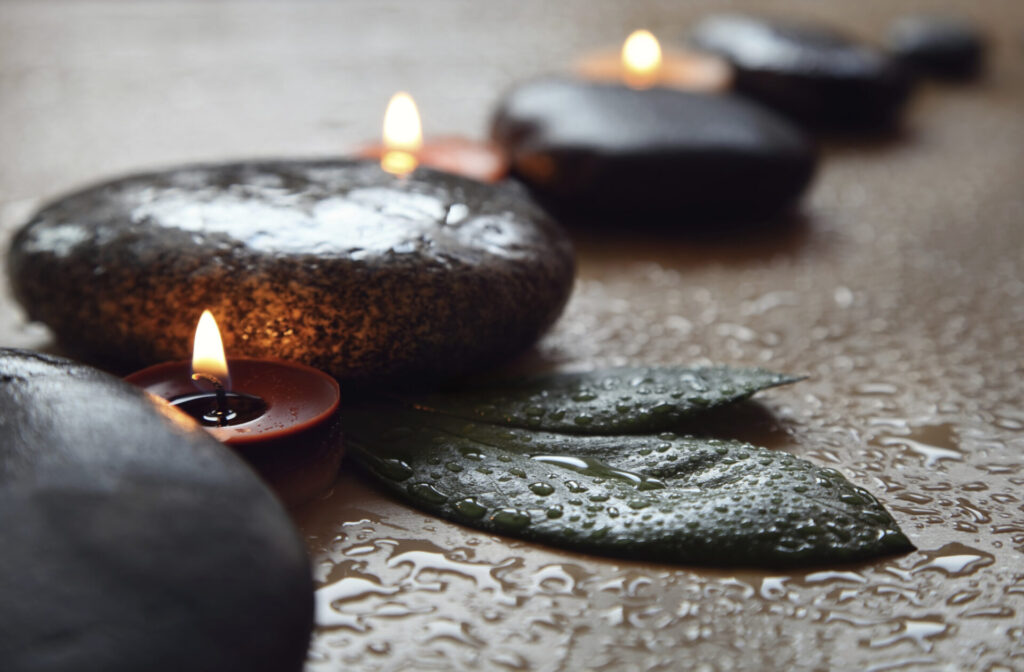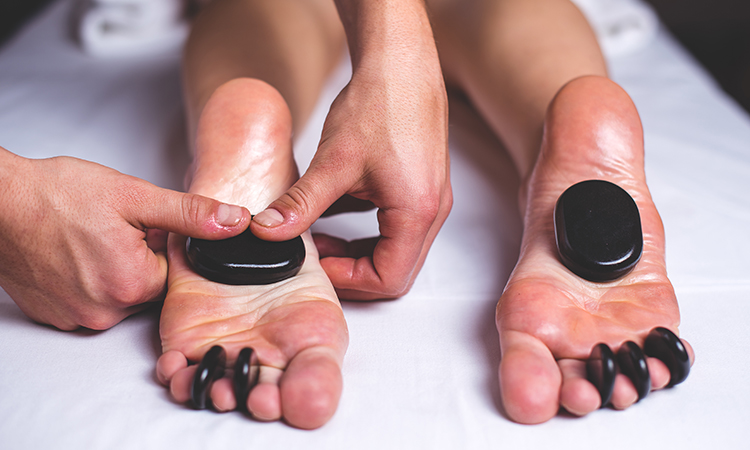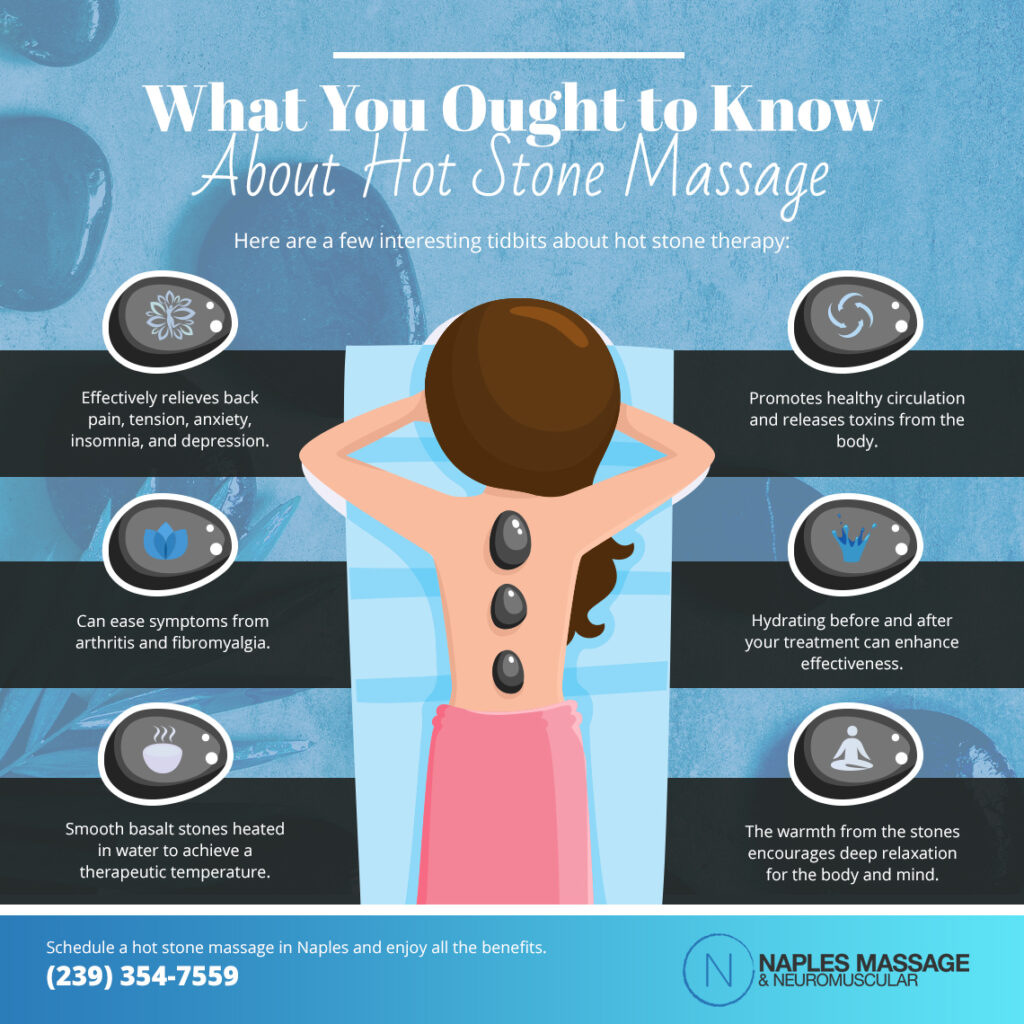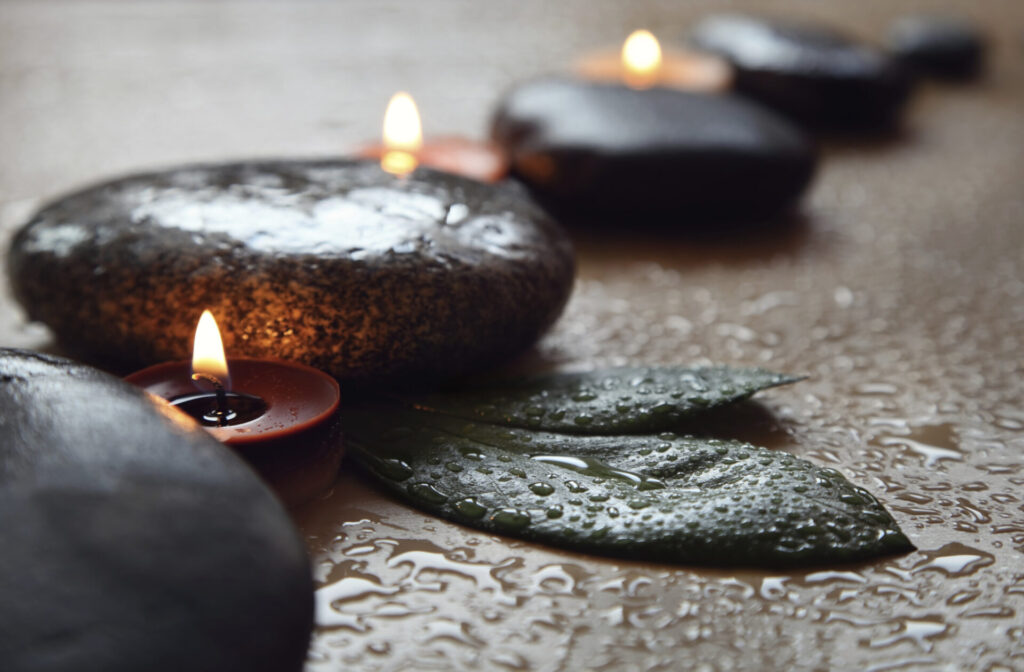Are you curious about the artful practice of hot stone massage and how the stones are used to create a soothing experience? Look no further! Centre of Wellness provides Beauty Training Courses that delve into the intricacies of this therapeutic technique. Let us guide you through the world of hot stone massage, where smooth, heated stones are strategically placed on your body and used to massage away tension and promote relaxation. This article will explore the various techniques employed, the benefits of this luxurious treatment, and how you can experience the rejuvenating effects for yourself. So sit back, relax, and let us transport you to a world of tranquility and bliss.
Choosing the Stones
When it comes to providing a relaxing and effective hot stone massage, selecting the right stones is crucial. There are various factors to consider in this process, including the type of stones, their size, and their shape.
Type of stones
One of the most commonly used stones for hot stone massages is basalt stones. Basalt is a type of volcanic rock that has excellent heat retention properties, making it perfect for this therapy. Other stones, such as marble or river rocks, can also be used, but they may not retain heat as well as basalt.
Size of stones
Choosing the right size of stones is essential for ensuring the comfort and effectiveness of the massage. Generally, smaller stones are used for more delicate areas like the face and neck, while larger stones are applied to larger muscle groups such as the back or legs. It’s important to have a variety of sizes available to accommodate different body parts.
Shape of stones
The shape of the stones also plays a role in the massage experience. Smooth and rounded stones are commonly used as they glide effortlessly over the skin. Flat stones are ideal for placing on specific areas of the body, while more irregularly shaped stones can be utilized for deeper pressure or trigger point release.
Heating the Stones
Properly heating the stones is crucial for a hot stone massage to be effective and safe. There are different types of heaters available, and specific temperature ranges and safety precautions need to be followed.
Types of heaters
There are various heaters available for heating the stones, such as electric stone warmers or water heaters. Electric stone warmers are designed specifically for hot stone massages and provide a regulated temperature, ensuring consistent heat throughout the session. Water heaters, on the other hand, require more attention as they can overheat the stones if not monitored closely.
Optimal temperature
The optimal temperature for hot stone massage is typically between 110 to 130 degrees Fahrenheit (43 to 54 degrees Celsius). However, it’s crucial to consult the client’s preferences and take into account any specific conditions they may have. It’s essential to have a thermometer handy to ensure the stones are within the correct temperature range.
Safety precautions
Safety should always be a priority when providing hot stone massages. Before applying the stones to the client’s body, it’s important to check the stones for any cracks or damage that could cause burns. Additionally, using a liner or towel between the stones and the client’s skin can prevent any discomfort or skin irritation. Regularly monitoring the stones’ temperature throughout the session is crucial to avoid overheating or burns.

This image is property of www.massagemag.com.
Preparing the Client
Before beginning the hot stone massage, it’s essential to properly prepare the client for the procedure. This includes checking for any contraindications, explaining the process, and ensuring the client is comfortably positioned.
Checking for contraindications
It’s crucial to assess the client’s suitability for a hot stone massage by checking for any contraindications. These could include conditions such as open wounds, recent surgeries, or certain skin conditions. If any contraindications are present, it’s important to discuss alternative treatment options with the client.
Explaining the procedure
Taking the time to explain the hot stone massage procedure to the client helps create a sense of trust and relaxation. Explain that the stones will be heated and applied to specific areas of the body to promote muscle relaxation and provide a soothing experience. Encourage the client to communicate any discomfort or concerns throughout the session.
Positioning the client
Before starting the massage, ensure the client is comfortably positioned on the massage table. Provide adequate support with bolsters or pillows to ensure proper alignment and relaxation. It’s essential to maintain the client’s comfort throughout the session by adjusting their positioning as needed.
Application of the Stones
Once the stones are heated, it’s time to apply them to the client’s body. There are specific guidelines for stone placement, various techniques used, and the appropriate pressure to ensure a soothing and effective massage.
Placement on the body
The stones are typically placed strategically along the body to target specific areas. Common placements include along the spine, on the shoulders and neck, and on the palms and soles of the feet. The placement may vary depending on the client’s specific needs and preferences.
Techniques used
During a hot stone massage, various techniques can be used to manipulate the stones and enhance their therapeutic benefits. These techniques can include gliding or stroking movements, kneading or rolling motions, and circular movements. The specific technique chosen will depend on the client’s comfort level and desired effects.
Pressure applied
The pressure applied during a hot stone massage should be adjusted to the client’s preferences and tolerance. Some clients may prefer a lighter pressure for a more relaxing experience, while others may desire deeper pressure to release muscle tension. It’s important to communicate with the client and adjust the pressure accordingly to ensure their comfort.

This image is property of cdn.shopify.com.
Specific Stone Techniques
In addition to the general techniques used with the stones during a hot stone massage, there are specific techniques that can be employed to maximize the benefits and relaxation for the client.
Stroking
Stroking is a gentle and soothing technique that involves using the stones to glide over the skin in long, fluid movements. This technique promotes relaxation and helps to spread the heat evenly throughout the body. It can be particularly effective for easing tension in the muscles and providing a sense of calm.
Kneading
Kneading involves using the stones to gently knead or roll over the muscles, applying pressure and manipulating the tissue. This technique can be used to target specific areas of tension or tightness and can help to loosen knots and promote muscle relaxation. Kneading can be adjusted to the client’s comfort level and can vary in intensity.
Circular movements
Circular movements involve using the stones to create circular motions on the client’s body. This technique can help to stimulate blood flow and promote relaxation in the muscles. Circular movements can be particularly effective for larger muscle groups and can help to release tension and promote a sense of overall well-being.
Trigger Point Release
Trigger points, or areas of tightness and tenderness in the muscles, can be effectively addressed during a hot stone massage. When performing trigger point release, the therapist identifies specific areas of tension and uses heated stones to apply focused pressure and release the tension.
Identifying trigger points
Identifying trigger points requires a keen sense of touch and observation. The therapist will search for areas of tightness or knots in the muscles that may cause pain or discomfort for the client. By applying pressure to these trigger points, tension can be released, promoting relief and relaxation.
Using stones to release tension
Heated stones can be extremely effective in releasing tension from trigger points. The heat helps to relax the muscles, making it easier to apply pressure directly to the affected area. The therapist may use various stone sizes and techniques to effectively target and address the trigger points, promoting pain relief and muscle relaxation.
Combining with other techniques
Trigger point release with hot stones can be combined with other massage techniques for a comprehensive and effective treatment. By integrating techniques such as kneading or circular movements, the therapist can provide a well-rounded and customized massage experience that caters to the client’s specific needs.

This image is property of www.massagemag.com.
Benefits of Hot Stone Massage
Hot stone massage offers a wide range of benefits, both physical and mental, that can enhance the overall well-being of the client.
Relaxation
One of the most significant benefits of hot stone massage is relaxation. The combination of heat and gentle pressure helps to calm the nervous system and promote a deep sense of relaxation. This can be particularly beneficial for individuals experiencing stress, anxiety, or trouble sleeping.
Muscle pain relief
Hot stone massage can provide effective relief for muscle pain and tension. The heat from the stones helps to loosen tight muscles and improve circulation, promoting quicker recovery and reducing discomfort. This can be especially beneficial for athletes or individuals with chronic muscle pain.
Improved blood circulation
The application of heated stones during the massage can help to improve blood circulation. The heat causes the blood vessels to expand, allowing for better blood flow and the delivery of oxygen and nutrients to the muscles and tissues. Improved blood circulation can have numerous benefits, including increased healing and reduced inflammation.
Precautions and Contraindications
While hot stone massage can be highly beneficial, there are certain precautions and contraindications to consider. It’s essential to be aware of these to ensure the safety and well-being of the client.
Skin conditions
Clients with certain skin conditions, such as burns, rashes, or open wounds, should avoid hot stone massage as the heat from the stones can exacerbate these conditions. Additionally, individuals with highly sensitive or delicate skin may experience discomfort or irritation from the heat. Always assess the client’s skin condition and make appropriate adjustments to the treatment.
Pregnancy
Pregnant individuals should exercise caution when considering hot stone massage. The heat from the stones can potentially raise body temperature and affect the developing fetus. It’s essential to consult with a healthcare professional and obtain proper clearance before proceeding with hot stone massage during pregnancy.
Heat sensitivity
Some individuals may have heat sensitivity or medical conditions that can be aggravated by the application of hot stones. For example, individuals with diabetes or certain cardiovascular conditions may be more susceptible to burns or discomfort from the heat. It’s crucial to discuss any pre-existing medical conditions with the client and adjust the treatment accordingly.

This image is property of dta0yqvfnusiq.cloudfront.net.
Aftercare and Follow-Up
After the hot stone massage, it’s important to provide clients with appropriate aftercare instructions to ensure their continued well-being and maximize the benefits of the treatment.
Drinking plenty of water
Hot stone massage can be dehydrating, so it’s important to encourage clients to drink plenty of water after the session. Hydration helps to flush out toxins and rehydrate the body, promoting faster recovery and overall well-being.
Avoiding strenuous activities
Following a hot stone massage, clients should avoid engaging in strenuous activities or workouts for at least a few hours. The body needs time to relax and recover after the treatment, and engaging in demanding physical activities immediately after can strain the muscles and negate the effects of the massage.
Scheduling future sessions
To maintain the benefits of hot stone massage, clients are encouraged to schedule future sessions. The frequency of sessions can vary depending on the individual’s needs and preferences. Regular treatments can help to prevent muscle tension and promote relaxation on an ongoing basis.
Training and Certification
To ensure the safety and effectiveness of hot stone massage, it’s crucial for therapists to receive proper training and certification. Engaging in accredited courses and continuing education opportunities can equip therapists with the necessary knowledge and skills to provide high-quality hot stone massage services.
Finding accredited courses
There are various massage therapy schools and institutions that offer accredited courses in hot stone massage. It’s important to research and select a reputable school that meets the industry’s standards and requirements. Online platforms, such as the Centre of Wellness Beauty Training Courses, offer comprehensive training options from the comfort of your own home.
Hands-on practice
Hands-on practice is a vital component of hot stone massage training. It allows therapists to become familiar with the stones, techniques, and treatment protocols. Look for courses that provide ample opportunities for practical training and encourage a supervised practice environment.
Continuing education opportunities
To stay updated with the latest advancements and techniques in hot stone massage, therapists should seek continuing education opportunities. These can include workshops, seminars, or specialized training courses. Continuing education helps therapists refine their skills and enhance their ability to provide exceptional hot stone massages.
Providing a hot stone massage can be a truly rejuvenating and therapeutic experience for both the client and the therapist. By selecting the appropriate stones, heating them correctly, applying them with care, and utilizing effective techniques, therapists can create a relaxing and beneficial massage experience. Remember to prioritize safety, communicate with the client, and offer aftercare instructions to ensure a positive outcome. With the right training and certification, therapists can offer a highly sought-after treatment that promotes relaxation, relieves muscle pain, and improves overall well-being.


